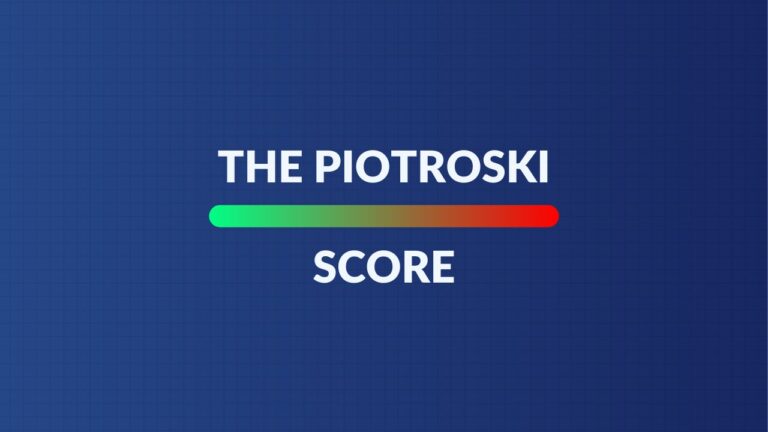Shopify (SHOP) – 2023 Investor Day – December 8, 2023

There were no new financial targets or product announcements from this event. What it did offer investors was a fascinating view into the inner-workings of Shopify. It covered the subtle differences in infrastructure and organizational structure that have powered its rise. It was a bit of a philosophy lesson which I, as a nerd, thoroughly enjoyed. I’ll highlight the key details here.
First Principles Thinking
Founder/CEO Tobi Lutke talked at length about First Principles thinking. This is an approach to problem solving that aims to break down challenges into separate, fundamental pieces. The philosophy aims to solve these pieces individually in ways that can repair and rebuild from the ground up. It involves original thinking, rather than relying on existing solutions as conventional wisdom to be followed. The original issue Tobi solved to create Shopify was tearing down the friction-fostering barriers to starting an online business.
They did so by building a rock-solid foundation to build on. Tobi describes the foundation as gasoline, with product applications derived from it as the gas pedal. A solid foundation is vital. Focusing there first is how Shopify delivered 99.99999% up-time this holiday weekend vs. competition only with 3 or 4 9’s after the decimal. This may seem irrelevant, but when handling tens of billions in volume, it’s not.
The founder-led nature and culture of Shopify, the team thinks, have put it in an ideal spot to practice this form of thinking across all business lines. Founders more frequently possess an ownership mentality (like Tobi surely has with his large stake) and a longer-term view that leads to prioritizing key hurdles over quarterly profits. They’re, generally speaking, more willing to assume risk and delay gratification.
In practice, Shopify focuses first on building the best products for its merchants under this frame of thought. Priority 2 is making money from these products to ensure it can keep building better and more.
More on Culture & Systems Creating Subtle Edges
Shopify’s executive roles are filled by nerds (my favorite kind of people) and developers, not managers. Their leaders are former entrepreneurs and coders who, through direct experience, have a keen understanding of what merchants need to succeed and how to give it to them. They’re also fixated on “merchant obsession” or listening closely to wants and needs. These are not promoted middle managers who are great at relaying task delegation and not much else. In 2022, the team actively shed layers of middle management to cut costs and get more efficient. Meta and many other firms did the same thing. This streamlined bureaucracy and morphed Shopify back into the “Crafter’s Paradise” label that it yearns for. The result? Senior engineers spend 22% less time in meetings, engineer productivity is up 37% Y/Y and project completion rate is up 56% Y/Y. More with less. This also has helped sales team productivity rise 150% Y/Y.
It doesn’t just build great software for merchants, but custom software for its own operations too. A lot of this work happened in the last 12 months and has allowed Shopify to eliminate several third-party vendor contracts. It’s this piece of software that mines company data and follows pre-set instructions to organize and delegate work.
“So most companies develop heuristics like person with X title gets to make Y decision… Titles are a really dumb way to determine expertise. We don’t want Shopify to be governed by an org chart, so we built a piece of software.” – COO Kaz Nejatian
GST is its internal operating system which “provides visibility on all projects across Shopify.” To double-check the quality of project prioritization/work, Tobi, Glen Coates (VP of Product) and COO Kaz Nejatian meet twice a quarter to review them all. This means “at most, any mission in the company can only be 6 weeks off track.” This may sound simple, but is rare for a company of this scale. It shows that, aside from the 2021-2022 irrational spending spree, this firm still clings to its start-up culture which required efficiency, agility and execution. This quote put a large smile on my face (lessons learned) and lends credence to their strategy:
“We are desperately trying to forget about mistakes made in 2021.” – Founder/CEO Tobi Lutke
It’s also the agility that allows them to implement new AI models and tweak existing models in real-time without ripping and replacing old systems. This puts them in the perfect spot to leverage the rapid innovation taking place within that area right now.
This custom software on its own is an operational edge. For example, it includes automation of human resource tasks which cuts work time by a full 50%. This means more hours to build and innovate rather than maintain.
Bigger Fish & Scalability
The idea above about obsessing over infrastructure and footing first leads to another key edge: Shopify merchants can endlessly scale with that best-in-class uptime. They can also do so with best-in-class checkout flows that convert 15% better than competition (36% better than Salesforce Commerce Cloud). They can do so without making concessions over which products and which integrations they need. There is no reason to ever leave Shopify because you can have whatever you want, build whatever you want, enjoy a superior user interface and grow as large as you want on the platform. If Shopify doesn’t directly offer the product, it has a market-leading commerce app store for developers to fill in the blanks. These apps are intuitively and neatly integrated into Shopify’s platform (emulating the look and feel of the ecosystem) with a deep set of application programming interfaces (APIs).
That’s nice to say, but do we have any evidence aside from financials? Yes we do. For mid-market merchants, Shopify wins 43 merchants from competition for every 1 merchant that churns. For larger merchants it’s 26-to-1 and for merchants over $125 million in annual revenue, it’s 38-to-1. Shopify is taking share from all competitors and across all merchant sizes. As a related aside, Shopify added Carrier as a large new B2B brand this past week.
It Just Does More
Glen Coates walked us through a review of everything Shopify offers. The breadth of its offering is unmatched and I think it’s worth covering again. Shopify is the only firm to come close to combining all of the following items:
- Fully integrated admin for online and offline selling.
- Ability to expand internationally with one click.
- Ability to sell to consumers and businesses in one integrated system.
- Ability to sell through any marketplace and social channel you can think of.
- Front and back office support without the need for a separate vendor.
- Ability to sell on mobile or desktop through a single system.
- Ability to enjoy complete inventory and marketing management across all channels. All of them.
- Large checkout conversion edges over substitutes.
And finally, the ability to simply integrate all missing pieces into Shopify in a way that emulates the look and feel of the rest of the site. As a reminder, Metafields and app blocks allow these 3rd party apps to be dragged and dropped throughout any part of a merchant’s site. It turns the emulation of fully custom builds into lego blocks. Importantly, it does so without forcing Shopify to ever build from scratch for a single merchant. It’s these edges that, per leadership, make it a bad decision to start a business anywhere but on Shopify.
“We solve more problems in the box than any other platform.” – VP of Product Glen Coates
More common merchant problems it plans to alleviate in 2024 mainly include improvements to existing focus areas:
- More complex product descriptions coming along with better description integrations across marketplaces.
- Mixing order types (For example, half buy online, pick up in store and half delivered).
- Improved local payout support.
- Perfecting B2B sales rep permissions to ensure they always have access to what they need. Nothing more, nothing less.
- Further localizing international product experiences to bring service levels up to par with North America.
Show Me the Money
It’s no secret that I love Jeff Hoffmeister as the firm’s new CFO. He transformed the approach into one that balances growth with profits. He led the sale of the fulfillment network and the shift in mindset to one that fixates on demand AND free cash flow. He sought to make a bloated company a lean, mean, fighting machine… and he has made ample progress already. The margin trends for the company are well documented, but there’s another key piece of evidence.

Source: Brad Freeman – SEC Filings, Company Presentations, and Company Press Releases
Shopify has cut paid search by $100 million Y/Y. It has prioritized more affordable channels of customer acquisition (such as consulting partnerships) and has seen these channels explode in growth contribution. While making these paid search cuts, new merchants from this single channel have still spiked higher. It’s spending less to acquire more merchants. This added channel segmentation has also given Shopify a much better sense of exactly which marketing dollars are working best. This will lead to some fine-tuning of budget allocation and better payback periods in the future.
GenAI
While there wasn’t much time spent on GenAI and Shopify Magic or Sidekick, there was one interesting idea shared. Tobi sees this technology moving from “imperative to declarative.” He offered a simple analogy to explain what this means. A consumer (or merchant) doesn’t want to know how a car is put together, why it turns on and how to make it work. It just wants an Uber to take them where they need to go. They simply want to see the end result. Needing to know the inner workings of the car, or GenAI model, is what he means by imperative while simply needing to tell the car where to go is what he means by declarative. GenAI is moving to a stage of consumer-facing applications where you can tell it where you want to go.
GenAI is only as good as the products that models augment. They can only do what those products can actually do themselves. That’s why product perfection BEFORE the GenAI wave sets companies with the best suites up for continued success. The winners before GenAI are more likely to be the winners after than some assume. The other reason for this is simply that GenAI models need large databases for proper training. Shopify’s commerce database is relevant and massive.
New Statistics
- Shopify shared a blurry graphic showing its online market share vs. direct competition doubled from 24% to nearly 50%. Unfortunately, there was no timeline offered on the X-axis… for some reason.
- We already knew that Shopify represented 10% of total North American e-commerce in 2022. What we didn’t know is that it’s at 6% in Europe and 4% in the rest of the world.
- It expects to generate $450 million in point-of-sale revenue this year.
- Shopify Audiences reduces customer acquisition cost (CAC) for merchants by up to 50%.
- Shopify Capital has a 70% loan renewal rate. That is not normal for a lending product.
- It has a $20 billion gross merchandise value (GMV) pipeline from system integrator (SI) partners like Deloitte and Accenture.
- 18% of its mid-market accounts are growing 40% Y/Y and 25% of its large accounts are growing over 40% Y/Y.
- Gartner named Shopify a leader in digital commerce in its most recent graphic. It’s #1 in ability to execute, but still behind Salesforce and SAP in completeness of vision.
- G2 named Shopify’s point of sale offering as the only leader in the space. It’s well ahead of Square and Lightspeed.
- Lifetime revenue bookings mean the estimated revenue from the sale of products to merchants for a given period. While growth was sequentially flat for a few quarters, it has since spiked higher while margin associated with these bookings has risen at an even faster clip.
- 68% of point-of-sale customer wins last quarter were from merchants not currently using Shopify for E-commerce. This is becoming a new customer lead generator.
- Shopify’s cohorts over the last 8 years have delivered a 24% CAGR vs. a market average of 13%.
- Shopify has 65 countries with over $100 million in GMV vs. 29 as of 2019.
30,000 Ft. View
Shopify, in my view, is in The Trade Desk and CrowdStrike’s league of truly elite companies. Its culture is one that can actually deliver on its goal of being a 100 year company. Its valuation premium certainly reflects that and means this firm will need to keep dominating the competition for the stock to be successful in the near term. I candidly view the near upside as quite limited but think the longer term opportunity is anything but limited. Risk/reward has deteriorated in recent months given the run-up, which is why I sold a chunk. Still, I want this special company to be in my portfolio. Please always feel free to disagree with this subjective opinion.











